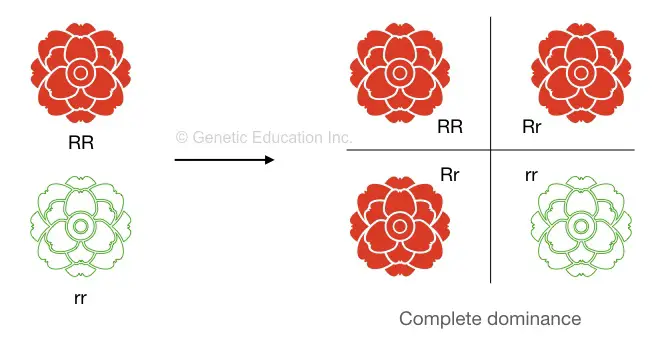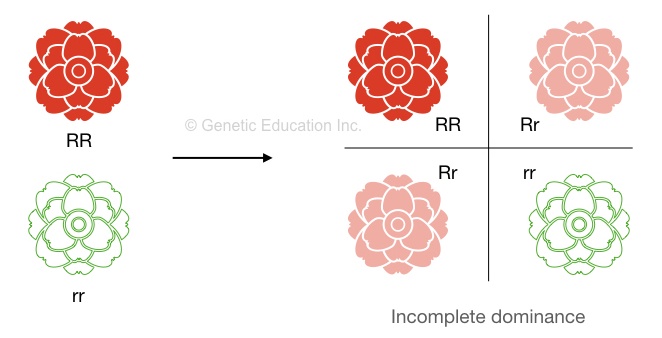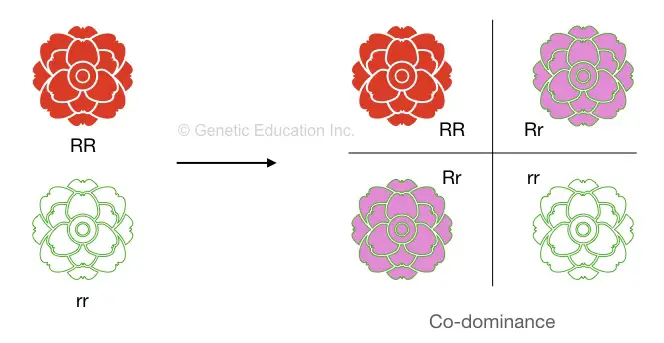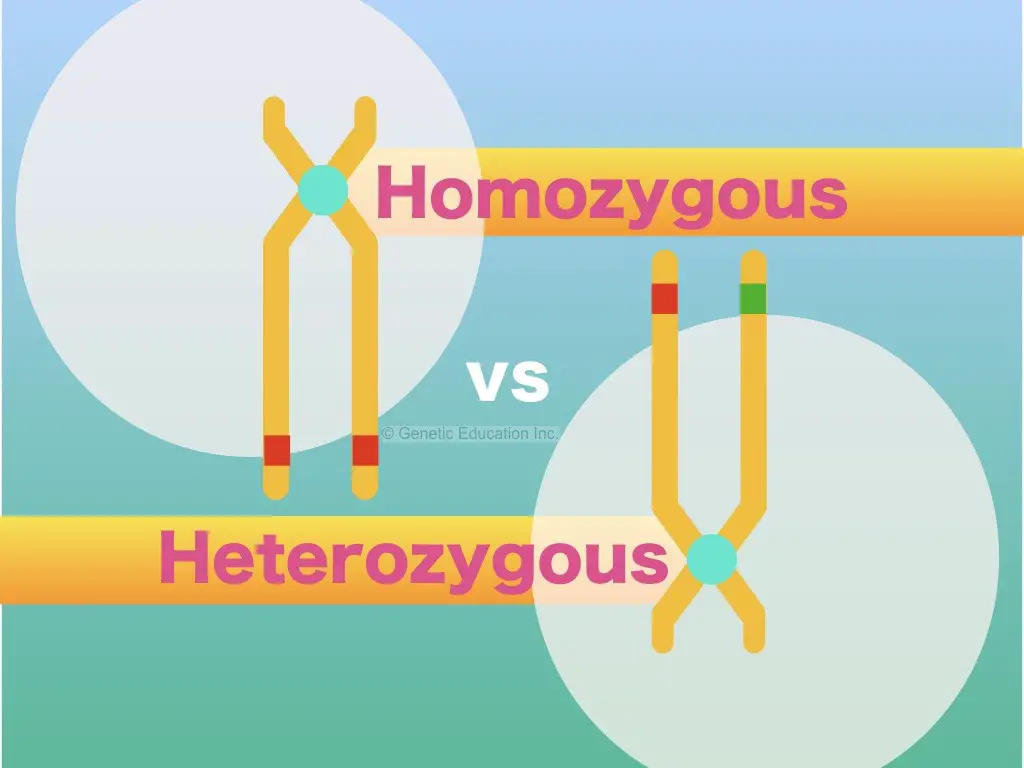“In a homozygous condition, a cell contains two same types of alleles for a gene while in a heterozygous condition a cell contains two different alleles for a gene.”
The structure of DNA is the same in all organisms on earth having DNA as their genetic material, made up of pentose sugar, nitrogenous bases, and trisphosphate.
The combination of triplets we know as ‘nucleotides‘, is a monomer unit of DNA. The sequence-structure varies between organisms and it makes us unique in the sense. What we are, is because of our unique DNA patterns.
The study of DNA, genes, and chromosomes is covered in genetic science. Some common terminologies often used in genetics are gene, allele, DNA, chromatin, homozygous, heterozygous, nullizygous, dominant and recessive, etc, which is indeed hard to understand.
Clinical genetics highly rely on two terminologies that are homozygous and heterozygous. In the present article, I will explain both terms precisely and trying to describe the differences between either. I hope this article will increase your knowledge of genetics.
Stay tunes.
Before reading this article, You can read a related article from here: Gene vs Allele.
Key Topics:
Homozygous vs heterozygous:
The condition is said to be homozygous when two identical or the same types of alleles are inherited together.
This means that two similar alleles are involved in making a protein.
Contrary, the condition is said to be heterozygous when two different alleles are inherited together. This means two different alleles- one dominant and one recessive, are involved in making a protein.
Now to make it more clear we have to understand the concept of dominant and recessive.
When a single allele is enough to make a protein or produce a phenotype is known as a dominant allele which masks the effects of the recessive allele in a heterozygous condition.
The recessive allele can only make a protein or produce a phenotype when two recessive alleles are present. However, a condition with one dominant and one recessive allele is known as carrier or heterozygous.
Here, alleles are alternative forms of a gene that makes a protein. Let us understand it by taking an example.
Gene ‘R’ decides the color of “some” flowers. The ‘R’ allele is dominant and produces red color flowers while the allele ‘r’ is recessive and produces white color flowers. So it is obvious that ‘RR’ alleles create red flower color and allele ‘rr’ creates white flower color.
But as the ‘R’ is dominant over the ‘r’ allele in the heterozygous condition with ‘Rr’ (one dominant and one recessive allele) only red color flowers are produced because the ‘R; is dominant. Now you got the point.
- Read further: Genotype vs phenotype.
Let’s come to the point,
So in the homozygous condition, a cell possesses either two same type dominant alleles (RR) or recessive alleles (rr). Whereas in the heterozygous condition the cell contains two non-identical alleles (Rr).
Remember alleles are inherited in pairs. Why so?
Genes or DNA are located on chromosomes, chromosomes are present in pairs because we are diploid animals. Humans have 22 pairs of identical autosomes and a pair of sex chromosomes. Therefore genes are also present in pairs. One gene or allele on one and another on the second identical chromosome.
If we explain the condition for germline cells, the homozygous condition produces a single type of gametes while in a heterozygous condition produces two separate types of games.Due to this reason, extra hybrid vigor is not observed in homozygous conditions unlike the heterozygous.
Vigour is a tendency to form superior phenotypes to parents. A heterozygous cell has two different types of allele sets thus if we try to crossbreed it, it can make some new superiors phenotypes.
In the plant genetics, different types of heterozygous plant species are created in order to produce new phenotypes through cross and back-breeding.
Notably, In homozygous, same trait or phenotype, we get even by self-breeding, on the other side, in heterozygous as two alleles are different, unlike traits or phenotypes are produced by self-breeding.
Only two genotype and phenotype conditions are possible for the homozygous, either homozygous dominant or homozygous recessive. However, for heterozygous it isn’t the case.
In heterozygous, two different alleles can form various different phenotypes such as complete dominance, incomplete dominance or codominance.
- Related article: DNA vs Gene.
Take a quick look:
Complete dominance:
In complete dominance, the dominant allele mask or completely suppresses the effect of the recessive allele in heterozygous conditions.

Incomplete dominance:
During the heterozygous condition, the dominant allele can’t completely suppress the effect of the recessive allele.

Codominance:
When the effect of both the alleles is expressed and shown their effectiveness in the heterozygous condition is known as codominance.

Now let us understand it by taking a real example.
Thalassemia is an autosomal recessive blood disorder occurring by the mutation in the HB gene.
A person with two dominant HBHB alleles remains unaffected- homozygous dominant. But having the presence of two HbHb recessive alleles causes disease.
Contrary to this, in the heterozygous condition with alleles HB and Hb the individual does not have symptoms of a disease but he or she can transmit it to their offspring and hence they are considered carriers for the disease.
Both homozygous and heterozygous genotypes can be determined using DNA sequencing or PCR.
In PCR, sequence-specific primers for each allele amplifies a gene. Results of the PCR show a single prominent DNA band for either homozygous dominant or recessive while two separate bands for two different alleles in heterozygous conditions are observed in the gel.
Summary
| Homozygous | Heterozygous |
| When two identical alleles are present. | When two different alleles are present. |
| Both are either dominant or both are either recessive. | Both alleles are different, one is dominant and one is recessive. |
| Produce a single type of gametes | Produce two different types of gametes. |
| Phenotype is either homozygous dominant or homozygous recessive. | Phenotypes are completely dominant, incomplete dominant or codominant. |
| No extra vigor | Can have extra vigor |
| Self-breeding produces the same type of phenotypes. | Self-breeding produces different types of phenotypes every time. |
| Examples of alleles are TT, tt, GG or gg | Examples of alleles are Tt, Gg. |
Related article: Gene vs genome.
Conclusion:
I have tried hard to make you understand the present topic in a layman language, I know things are a bit complicated but you can go through the article in the future (when you have doubts) by bookmarking it.
Lastly, we need positive genetic changes to survive on the earth, for this purpose, new alleles must be created by mutation, natural selection or random phenomenon. Although it’s also important that new alleles must not be lethal to us. Heterozygous organisms are a great source of new variations.
In the plant genetics especially, new heterozygous plants are created from homozygous one and by self and back-cross, desirable phenotypes can be produced. Nonetheless, back and self-cross are not possible for humans and animals.
Subscribe to our weekly newsletter for the latest blogs, articles and updates, and never miss the latest product or an exclusive offer.




Thanks for sharing this article and information.